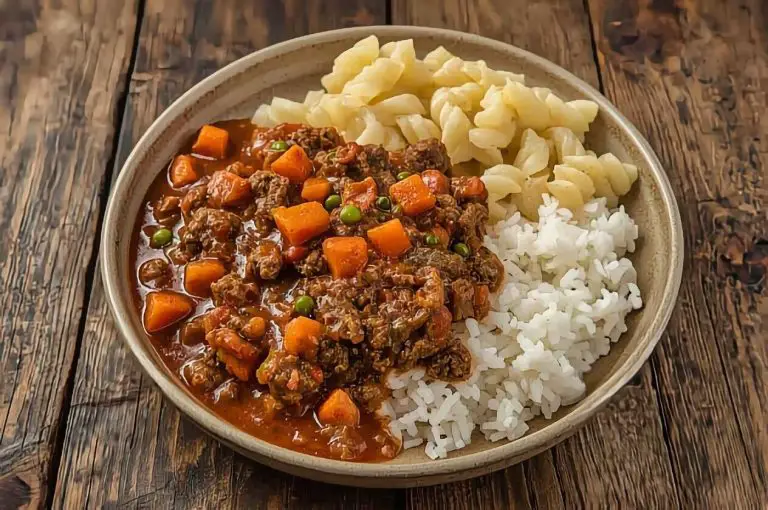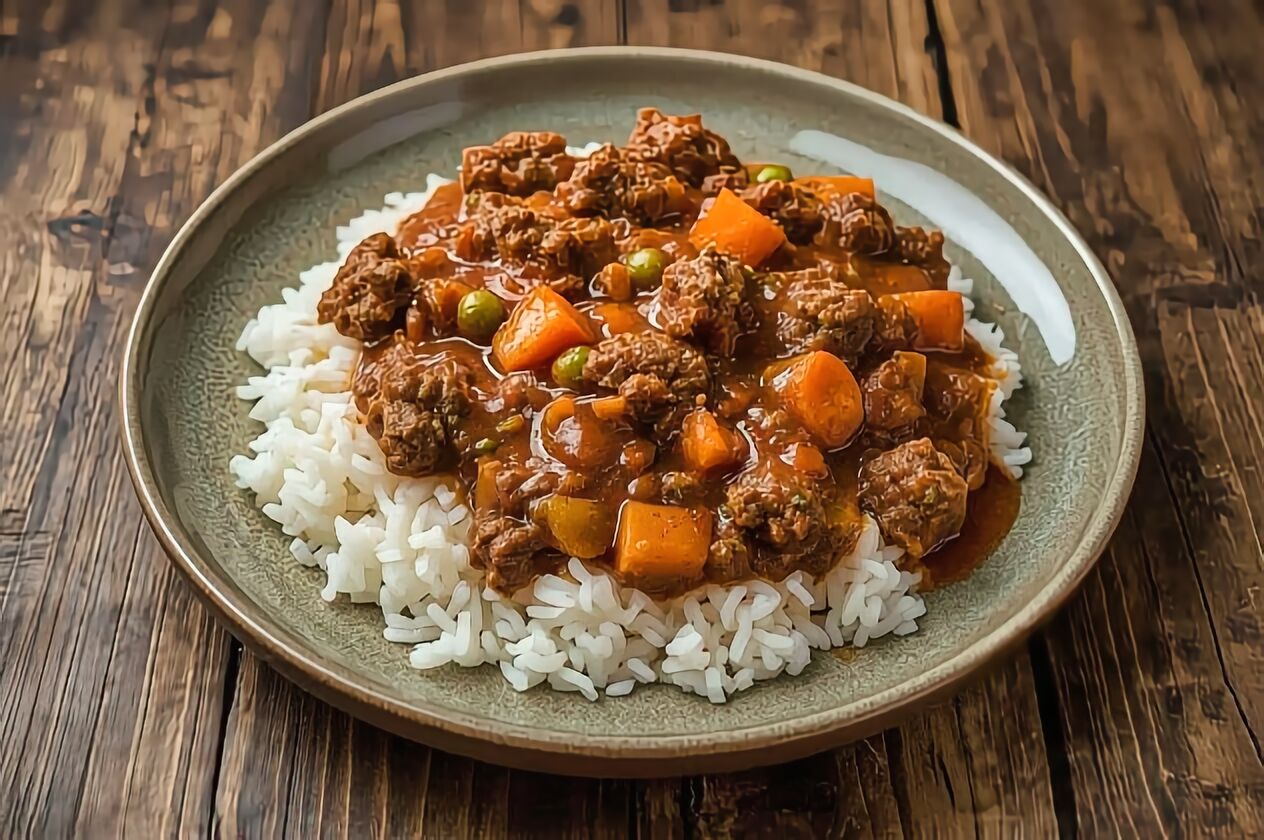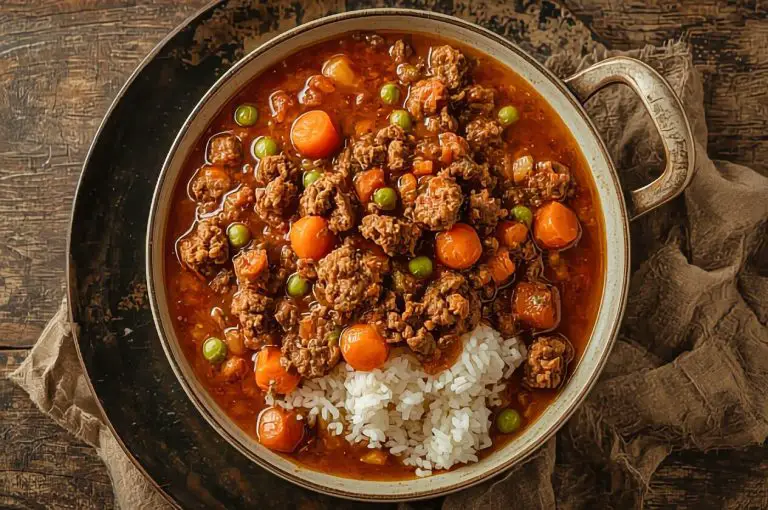Bolivian Saice recipe, a beloved stew from the southern region of Bolivia—most notably Tarija—brings together tender beef, potatoes, peas, carrots, and a lively mix of spices. It’s a dish that feels like home: rich, filling, and layered with the kind of flavor that lingers. Saice isn’t just any stew; it’s a cornerstone of Bolivian cuisine, cherished for its depth and soul-warming comfort.
People across Bolivia adore Saice, maybe because it’s so adaptable, or maybe because it’s just plain good. The recipe welcomes tweaks—swap out meats, play with spices—yet it always manages to taste like something your Bolivian grandmother might have made. Traditionally, folks serve it with fluffy white rice, sometimes tossing a boiled potato alongside for that extra authentic touch.
John and Laurel Rodgers—travelers with a knack for finding real-deal recipes—picked this one up during their time in Bolivia. Their hands-on approach and love for honest food shine through, so if you’re after a taste of Tarija, this is about as close as you’ll get without hopping on a plane.
Key Takeaways
- Saice is a classic Bolivian beef stew loaded with potatoes and spices.
- The recipe’s flexible—tinker with it to suit your mood or pantry.
- It’s a southern Bolivian favorite, usually paired with rice.
Bolivian Saice Recipe Ingredients
Servings: 6
Prep Time: 15 Minutes
Cooking Time: 1 Hour
- 2 lbs beef, cut into small cubes
- 1 large medium onion, finely chopped
- 1 red onion, sliced
- 3 cloves garlic, minced
- 1 cup peas (fresh or frozen)
- 1 cup carrots, diced
- 1 cup green beans, cut into 1-inch pieces
- 1 cup white rice (to serve)
- 2 cups beef broth (or vegetable broth if you prefer it lighter)
- 2 tbsp olive oil
- 1 tsp salt
- 1 tsp ground cumin
- 1/2 tsp smoked paprika
- 1/2 tsp ground black pepper
- 1/4 tsp oregano
- 1/4 tsp red pepper flakes (optional, for a kick)
- 2 tbsp vinegar
- 1/2 cup chuño (dried Andean potato, optional) or just use more regular potatoes

Bolivian Saice Recipe Cooking Instructions
Start by heating up the oil in a big pot—medium heat does the trick. Toss in your chopped onions and garlic, and let them soften until they smell amazing.
Add your ground beef or cubed beef next. Stir it around until it browns on all sides. Don’t rush this part; good color equals good flavor.
Pour in the broth (or water with bouillon cubes if you’re improvising). Add in chopped tomatoes and a bit of chipotle pepper if you’re after a gentle heat.
Turn the heat down and let the stew simmer for about an hour, maybe a little longer. The beef should get nice and tender, and the flavors will really come together.
Once the meat’s where you want it, add in your boiled, cubed potatoes, carrots, and peas. Sprinkle in the cumin, black pepper, and salt.
Let it all bubble away for another 15-20 minutes so the flavors can get friendly.
For the Sarza sauce, just mix up finely chopped white onions, peeled tomatoes, ground red pepper, and a splash of water. Chipotle pepper is optional, but if you like spice, go for it.
Dish up the Saice hot over steamed rice or with a chunk of bread. Top with Sarza for a zippy, fresh finish. This hearty stew makes a killer lunch or dinner.

Bolivian Saice Recipe
Ingredients
- 2 lbs beef cut into small cubes
- 1 large onion finely chopped
- 1 red onion sliced
- 3 cloves garlic minced
- 1 cup peas (fresh or frozen)
- 1 cup carrots diced
- 1 cup green beans cut into 1-inch pieces
- 1 cup white rice (to serve)
- 2 cups beef broth (or vegetable broth if you prefer it lighter)
- 2 tbsp olive oil
- 1 tsp salt
- 1 tsp cumin ground
- 1/2 tsp paprika smoked
- 1/2 tsp black pepper ground
- 1/4 tsp oregano
- 1/4 tsp red pepper flakes (optional, for a kick)
- 2 tbsp vinegar
- 1/2 cup chuño (dried Andean potato, optional) or just use more regular potatoes
Instructions
- Start by heating up the oil in a big pot—medium heat does the trick. Toss in your chopped onions and garlic, and let them soften until they smell amazing.
- Add your ground beef or cubed beef next. Stir it around until it browns on all sides. Don’t rush this part; good color equals good flavor.
- Pour in the broth (or water with bouillon cubes if you’re improvising). Add in chopped tomatoes and a bit of chipotle pepper if you’re after a gentle heat.
- Turn the heat down and let the stew simmer for about an hour, maybe a little longer. The beef should get nice and tender, and the flavors will really come together.
- Once the meat’s where you want it, add in your boiled, cubed potatoes, carrots, and peas. Sprinkle in the cumin, black pepper, and salt.
- Let it all bubble away for another 15-20 minutes so the flavors can get friendly.
- For the Sarza sauce, just mix up finely chopped white onions, peeled tomatoes, ground red pepper, and a splash of water. Chipotle pepper is optional, but if you like spice, go for it.
- Dish up the Saice hot over steamed rice or with a chunk of bread. Top with Sarza for a zippy, fresh finish. This hearty stew makes a killer lunch or dinner.
Notes
Cooking Tips
If you want the best flavor, brown the beef in batches—crowding the pan just steams it, and that’s not what you want. A heavy-bottomed pot or a big skillet works best for this step; it gives you room to move and helps the onions and garlic get that sweet, savory edge.
Go easy on the spices at first. Cumin and chipotle can take over if you’re not careful, but you can always add more later. Simmer the stew low and slow so the beef softens and the flavors have time to mingle. No need to rush—good things happen when you wait.
Sarza sauce brings a punchy, spicy lift, especially if you prep it ahead so the flavors meld. Chop everything fine so it blends right in.
If the stew gets too thick, splash in some broth or water—just enough to loosen it up, not drown it. Keep an eye on things as they cook.
Leftovers? Store Saice in an airtight container in the fridge. It actually tastes even better the next day. Reheat gently in a skillet over low heat so it stays juicy.
Bolivian Saice Recipe FAQs
Curious about what goes into a Bolivian Saice recipe, how to serve it, or what sides work best? Here’s what you need to know if you’re thinking about trying this Bolivian classic.
What are the traditional ingredients used in making the Bolivian Saice recipe?
In the Bolivian Saice recipe you’ll usually find minced or chopped beef, potatoes, peas, onions, tomatoes, and red chili peppers in Saice. Cumin and garlic are must-haves. Some folks toss in carrots or a bit of chili paste for extra oomph.
How do you serve and eat the Bolivian Saice recipe?
People pile Saice over white rice or sometimes noodles. A boiled potato on the side is pretty common, too. The Bolivian Saice recipe is served hot, often at family meals or get-togethers, so everyone can dig in while it’s still steaming.
Can you share a step-by-step guide for preparing homemade Bolivian Saice recipe?
Fry your onions until soft, then add minced beef and cook it through. Add potatoes, peas, tomatoes, and a good hit of cumin and chili powder. Simmer until the potatoes are soft and everything smells irresistible. Serve the Bolivian Saice recipe hot over rice or noodles.
What are the common side dishes to accompany the Bolivian Saice recipe?
Rice is the go-to side—nothing fancy, just plain white rice. Sometimes you’ll get a boiled potato or a little salad. Sarza, that spicy onion-tomato sauce, is a favorite topper for a bit of extra zing.
Are there any regional variations of the Bolivian Saice recipe?
Definitely. The Bolivian Saice recipe is most famous in southern Bolivia, especially Tarija, but in Cochabamba or other regions, you’ll notice tweaks—maybe more veggies, maybe more spice. Heat levels can vary a lot, depending on who’s cooking.
What are some tips for achieving authentic flavor in the Bolivian Saice recipe?
Honestly, nailing that real Bolivian Saice recipe flavor starts with fresh spices—cumin and chili peppers, especially. I always rinse the onions first; it takes the edge off and makes everything taste a bit smoother. Letting the meat and veggies simmer together for a good while really brings out those deep, blended flavors. And, if you ask me, serving the Bolivian Saice recipe over rice or even noodles just feels right—it ties the whole thing together in the most comforting way.

